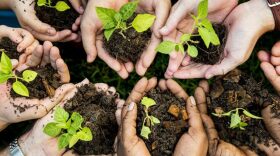-
TALLAHASSEE -- Gov. Ron DeSantis and the state Cabinet on Monday quickly approved $141 million in deals that will help preserve land from the Panhandle to Southwest Florida.
-
More than a dozen new trails have been added to the growing network of more than 500 wildlife viewing sites throughout Florida. Great Florida Birding and Wildlife Trail
-
When discussing climate change, the conversation is usually about what’s to come, as in how much seas will rise or how high temperatures will get. Far less common is what happened yesterday, who lived where, and how climate change will affect the artifacts they left behind.
-
Florida residents own rights to decide if 5,000 acres of farmland in Charlotte, Hardee, and Highlands counties will ever be developed now part of Rural and Family Lands
-
Southwest Florida is so rich in wildlife habitat and has so many threatened and endangered species that the U.S. Fish and Wildlife Service wants to add the region to the world’s largest network of protected lands. The Southwest Florida Fish and Wildlife Conservation Area
-
U.S. Army Corps of Engineers invites volunteers to plant trees at W.P. Franklin Recreation Area on National Public Lands Day, Sept. 24
-
Third annual cleanup event to rally the community to pick up debris along surrounding island shorelines and waterways.
-
The Sea Turtle Conservancy's annual Tour de Turtles allows people to follow the marathon migration of four different species of sea turtles that have been tagged with satellite transmitters.
-
Cleared land and construction sites are commonplace in Southwest Florida. According to U.S. Census data, Lee County is the second fastest-growing county in the state. The increase in population leads to the need for more development, which raises the question of how to preserve the wildlife that makes this region so unique.
-
Burrowing owls and gopher tortoises have been either discovered on, or been brought to, one of 48 residential lots where nothing will ever be built. These plots of land have been purchased by members of a wildlife group establishing a patchwork sanctuary for the animals throughout the northwestern part of town. Cape Coral Friends of Wildlife has spent about $450,000 total purchasing four dozen plot and are negotiating to buy five more. The 300-member group has amassed the citizen sanctuary since 2002 and focus on burrowing owls and gopher tortoises because they both dig into the ground for protection. Most of the lots are easy-to-dig-in sandy spoil dredged up from the bay bottom when the city was created in the 1950s.

Play Live Radio
Next Up:
0:00
0:00
Available On Air Stations










